Notizie dal Festival
WORKSHOP: LA MUSICA DISEGNA IL CINEMA
Il workshop La musica disegna il cinema è dedicato alle contaminazioni tra la musica e il video
d’autore. Curato da Roberto Calabretto e Giovanni De Mezzo, studiosi di musica sperimentale
e da film, supportati da un ampio corollario di video, il workshop partirà dai pionieri del video
musicale come John e James Whitney e Norman McLaren, per arrivare ad artisti contemporanei
come Bady Minck e Zbigniew Rybczyński. Particolare attenzione è rivolta a Norman McLaren,
regista scozzese esperto di arte elettronica e di cinema d’animazione con suoni sintetici e a
Bady Minck, artista e cineasta operante a Vienna capace di incrociare i vari ambiti disciplinari.
Non mancheranno però neppure coloro che hanno fatto la storia della video arte nel nostro
Paese, con approfondimenti su figure come Michele Sambin, Sylvano Bussotti e Giuseppe Chiari,
secondo il quale l’arte è “viva” perché si mescola al differente, mentre la musica è il confronto
fra corpi e gesti.
La ‘nascita’ della video-arte si colloca in un preciso momento storico in cui il rinnovamento
tecnologico ha comportato l’avvento di linguaggi innovativi che si distaccano dalla tradizione.
L’avvento dell’immagine elettronica ha favorito la nascita di nuovi modelli linguistici, dove
l’unione dei suoni con le immagini è riformulata su basi completamente differenti da quelle
precedenti. Questo genere di sperimentazioni è raccolto non solo nell’ambito della video-arte,
ma anche in quello del cinema di animazione e sperimentale di cui questo workshop vuole
trattare.
The ‘birth’ of video-art is placed in a specific historical moment which opens up to new horizons in the music field. With the introduction of technologies and the consequent experimentations comes a range of languages radically different from the established traditional ones. This process allows the new ‘ phonicity’ displayed in front of the composers to mark a separation from the usual formal structures on one hand, while on the other it sets a new language based on a range of possibilities once beyond imagination for the traditional tools of sound production.
Furthermore, the arrival of the electronic image marked a breakthrough in the synaesthesic research by promoting the birth of new linguistic models, where the blending of sounds and images is being reformulated on a completely different level. We find the same experimentations in the field of video-art, animation and avant-garde cinema, of which this workshop traces a short perspective by presenting some quintessential figures. For this purpose, we must take into account of work of Scottish artist Norman McLaren’s, considered as a masterpiece of electronic art and in animation cinema thanks to its synthetic sounds. McLaren’s work is to be considered unanimously a benchmark in the experimentation area, and both Roger Manvell and John Huntley acknowledge him to be <<the most noticeable>> amidst the authors of this renewal of ideas in the sphere of the cinematographic soundtrack area. Comparable to McLaren are the Whitney brothers, full-blown authors of new universes of sound in the short films animation area. As we can notice in “Five Abstract Film Exercises” (1942-1944), their experimentations make use of an instrument, invented by John, which consists in an optic printer assembled with a series of calibrated pendulums that allow to record the music directly on the tape, a technique which results in an audio-visual connection and a highly elaborated synchronization.
Many years later, in the Italian setting, Giuseppe Chiari stands out as a leading figure of the Fluxus trend, which he embraced in 1962 with “Gesti Sul Piano” (performed at the Festspiele Nevester Music Festival of Wiesbaden), one of the most interesting personalities in the Italian body-art scene. Performer of his own works, Chiari tests different methods of playing by using water (<<play with water/and say the word “water”>>), hair, pianos, rocks, cellos and paper. This is where his constant tending towards linguistic trespass comes from, lying in the firm belief of the impossibility of enclosing music in a specific area. The notion of music itself is extended to his behavior, staging knowingly transgressive actions in order to destroy the conformism of the ritual of traditional performances, making the sound experience accessible to everyone in a strongly democratic intent. Art is easy on its own accord, and everybody can produce it: <<music in playing/music is playing/music is playing>>. In his concerts not only sounds are produced, but also gestures. This perspective ends with a small tribute to Bady Minck, a very outstanding figure still little known in Italy. In the work which is going to be presented, “Das Sein Und Das Nichts”, the animation techniques become means of examining the process of composition and structure of a work.
About Benedetta
Search
Search
Archives
- Marzo 2024
- Febbraio 2024
- Marzo 2023
- Febbraio 2023
- Ottobre 2022
- Maggio 2022
- Aprile 2022
- Marzo 2022
- Ottobre 2021
- Settembre 2021
- Agosto 2021
- Luglio 2021
- Ottobre 2020
- Settembre 2020
- Luglio 2020
- Marzo 2020
- Febbraio 2020
- Settembre 2019
- Aprile 2019
- Marzo 2019
- Febbraio 2019
- Gennaio 2019
- Marzo 2018
- Febbraio 2018
- Marzo 2017
- Gennaio 2017
- Marzo 2016
- Febbraio 2016
- Ottobre 2015
- Marzo 2015
- Febbraio 2015
- Dicembre 2014
- Marzo 2014
- Febbraio 2014
- Ottobre 2013
- Marzo 2013
- Febbraio 2013
- Gennaio 2013
- Ottobre 2012
- Aprile 2012
- Marzo 2012
- Febbraio 2012
- Gennaio 2012
- Dicembre 2011
- Novembre 2011
- Maggio 2011

